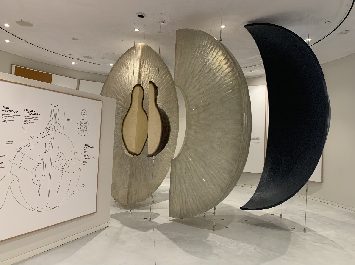One of the prime methods used by museums to educate their audience is through the medium of storytelling. When carried out correctly, storytelling can captivate an audience, enriching their minds and offering up a fun day out. Unfortunately, correctly utilising storytelling within the museum environment isn’t always easy and many of these attractions end up feeling burdensome when not incorporated properly. There are a multitude of ways in which museums can become better storytellers and doing so is very much in their best interests when it comes to visitor retention and engagement.
Engage with the Audience
Walking into a museum and seeing huge panels of text next to each exhibit is massively off-putting for most. Between work and school, conventional learning methods such as reading from a piece of paper are incredibly overused and are far less likely to engage your audience as something that stimulates their senses and grabs their attention. It’s important to consider that your audience will seldom be comprised of a single demographic and thus, your exhibits need to be versatile enough to offer something to people of varying ages, interests, and levels of education. Some museums choose to segment their exhibits based on content in order to keep their younger visitors away from some of the nastier bits of history or culture. This also allows them to hand craft exhibits that are best suited toward engaging with the demographic most likely to visit them
Create a Flow
While it can be more of a challenge for certain types of museums, the most efficient storytellers tend to formulate some sort of flow within their museum. You don’t want your visitors to have to search around for the next exhibit that correlates to the topic they are learning about. Many museums choose the chronological approach when structuring their exhibits in order to show visitors the next part of the story in – what is commonly – the next exhibit in the room or down the hallway. While you certainly don’t have to rely on chronological order when structuring your exhibits, those with a focus on history tend to be best illustrated and accessible when ordered in this way.
A museum that doesn’t boast any sort of flow – be it chronological, thematical, or aesthetic – always ends up feeling a little chaotic. While this doesn’t outright hinder the quality of your storytelling, it can make it far more difficult for a visitor to engage themselves within. It’s also important to keep in mind that the more challenging it is to experience a story, the more people will lose interest or drop off along the way.
Utilise the Latest Technology
A lot of the latest tech available to museums is incredibly versatile and can be used in a variety of ways to engage the user and enrich their storytelling experience. Many museums have started to adopt features such as interactive kiosks, large monitors/projectors, and even mobile applications. While this can be initially expensive to set up, it’s opens up a world of possibilities when it comes to storytelling and can be far more efficient at engaging visitors than a regular exhibit. Some tech even allows you to provide bespoke experiences to different consumer types; e.g., exhibit-related games/activities for children, links to additional reference materials for those with a particularly keen interest, and even guided audio tours for those with special needs.
Contact Scruffy Dog Creative Group for Museum Design Services
For museum design solutions that will help your museum ideas get off the ground, get in touch with our museum design services team at Scruffy Dog Creative Group today. Click here to fill out our ‘Contact Us’ form, give us a call at 020 3468 4220, or drop us an email at info@scruffydogltd.com.

